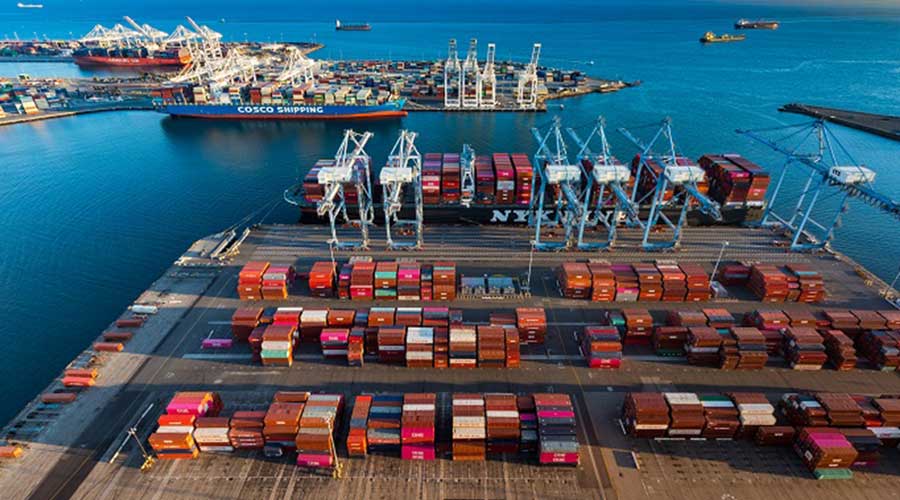Stay updated on news, articles and information for the rail industry
11/9/2022
Rail News: Intermodal
Global Port Tracker report: Despite healthy holiday shopping, imports aren't robust

Retailers expect a busy holiday season over the next two months, but import volumes at the nation’s major ports should continue to slow from record levels reached earlier this year, according to a recent Global Port Tracker report released by the National Retail Federation (NRF) and Hackett Associates.
Cargo levels that historically peak in the fall instead peaked in spring this year because retailers’ concerns about port congestion, rail and port labor negotiations and other supply-chain issues caused them to stock up far ahead of the holidays, said NRF Vice President for Supply Chain and Customs Policy Jonathan Gold in a press release.
“With a rail strike possible this month, there are still challenges in the supply chain, but the majority of holiday merchandise is already on hand and retailers are well prepared to meet demand,” he said.
The NRF and Hackett Associates expect the flattening of demand that began around mid-year to continue into 2023’s first half. That will depress containerized import volumes, which already have declined in recent months, according to the report.
The 13 U.S. ports monitored by the report registered a record 2.4 million 20-foot equivalent units (TEUs) in May, but volume has mostly declined since. October import volume — although not yet official — is estimated at 2.02 million TEUs, which would be 8.5% lower than October 2021’s total.
Global Port Tracker forecasts November volume at 1.92 million TEUs, down 9.2% year over year — the lowest total since February 2021, the last month when imports fell below 2 million TEUs. December volume is projected to drop to 1.9 million TEUs, down 9%.
Looking ahead to next year, January volume is forecast at 1.98 million TEUs, down 8.4%, and February volume is projected at 1.71 million TEUs, down 19.1% from 2021.
Contact Progressive Railroading editorial staff.


 LRW Honors Amtrak’s Acheson As Railway Woman Of The Year
LRW Honors Amtrak’s Acheson As Railway Woman Of The Year
 From Editor-In-Chief Foran: Of Gender Equity And Inclusion
From Editor-In-Chief Foran: Of Gender Equity And Inclusion
 Spotlight On Some Of Today’s Rail Safety Products
Spotlight On Some Of Today’s Rail Safety Products
 Women of Influence in Rail eBook
Women of Influence in Rail eBook
 railPrime
railPrime







